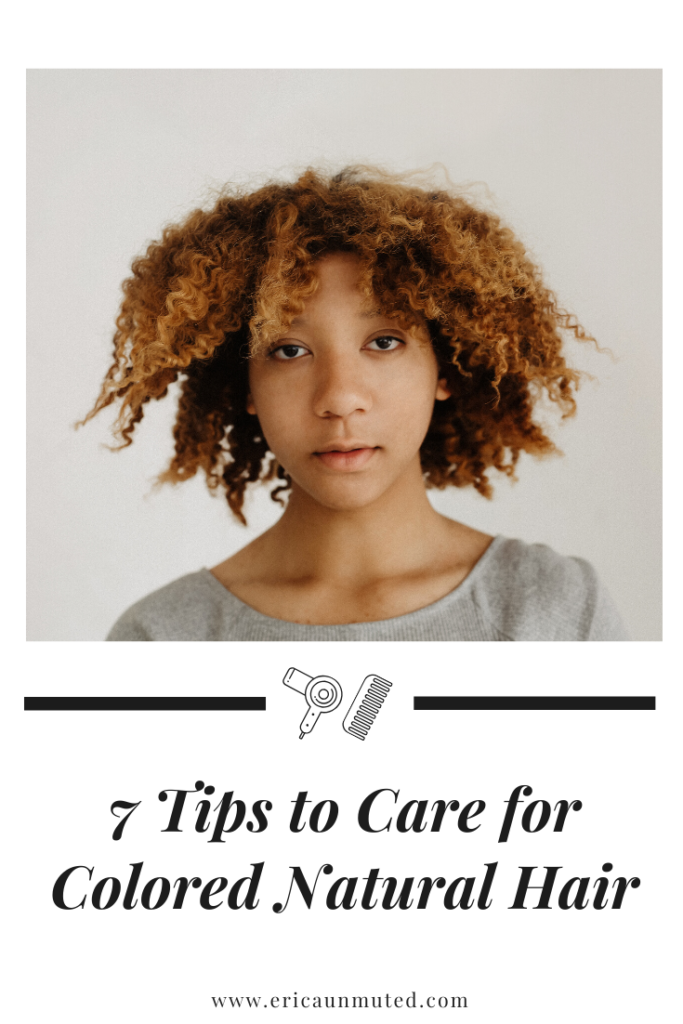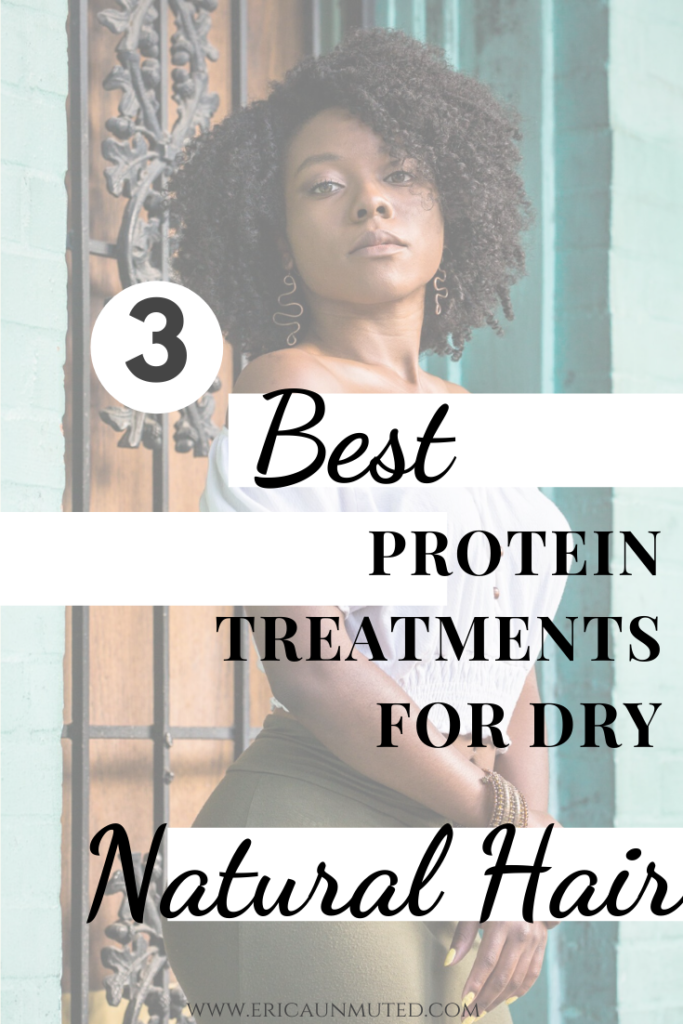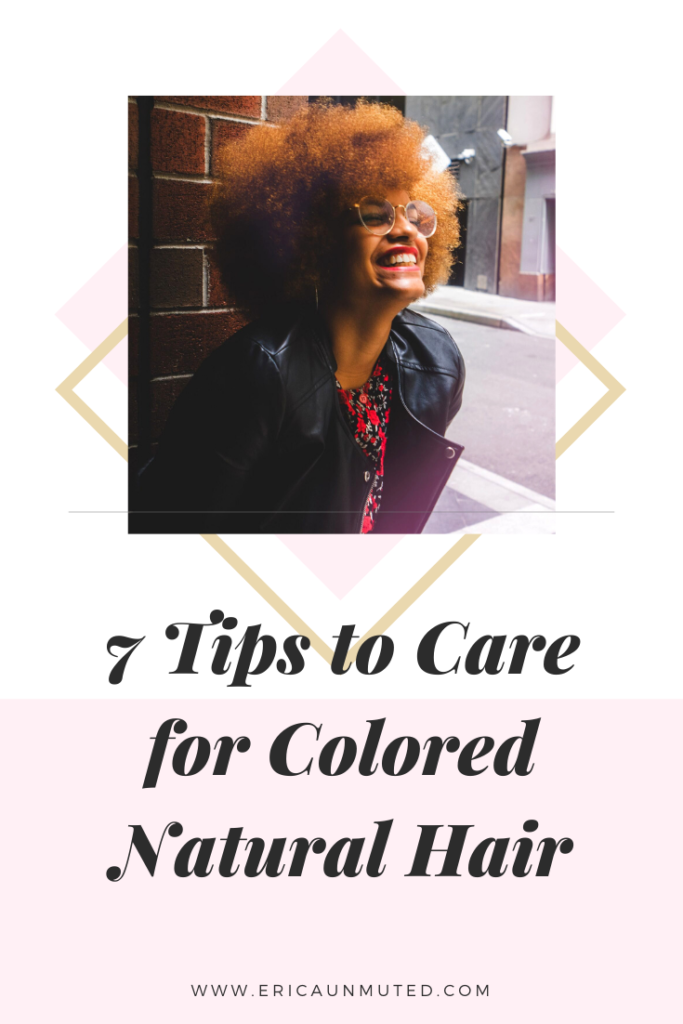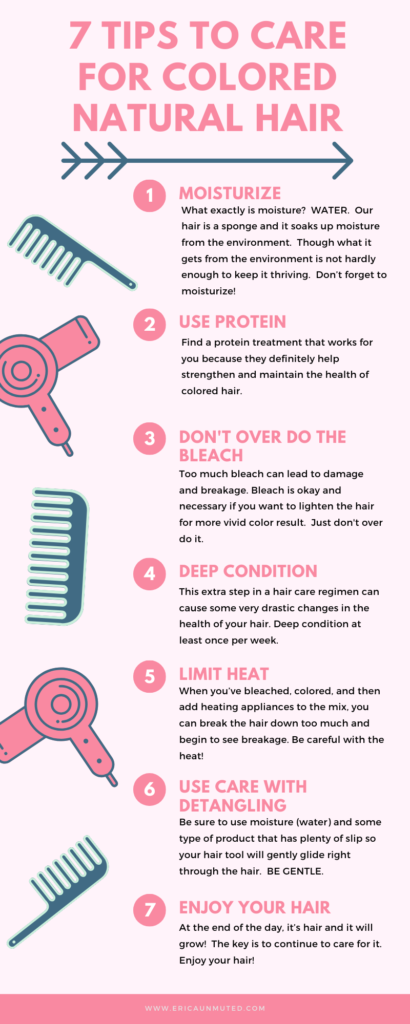
How to Care for Colored Natural Hair
Colored natural hair can be a handful to work with. One of the main characteristics of colored and chemically processed hair is DRYNESS.
There is definitely an art to caring for it! And I’d say some of the most important keys are deep conditioning, moisture and protein treatments.
Keep reading for some awesome info!
I used to be soooo afraid to use color on my hair because I’d always heard that color damages your hair. In my new journey of loving my hair in it’s natural state, it was a goal of mine to grow my hair to my waist.
So if color was going to damage my hair, I didn’t want any parts of it!
But…somewhere in the process, I started wanting to try something different!
I’d had my relaxed hair bleached with streaks, and over time they just disappeared. I was so clueless back then, I didn’t know my hair had broken off, haha!
Well this time around, I went in with more knowledge and information about caring for my hair, so I was prepared! Still afraid, but prepared!
My hair had color for about a year, and I had zero breakage. Yes, ZERO.
The color treated areas were still growing along with the rest of my hair, and it was just as healthy!
Once I got to writing about this, it got rather lengthy (if you ask me about hair, I can talk for days about it, lol), so I had to break it out in a couple parts.
Moisture is Extremely Important for Natural Hair
If you’ve been natural for any length of time, you know the importance of moisture. Hair doesn’t thrive without it!
Without moisture, the hair will dry out, which in turn leads to brittleness and breakage. And what exactly is moisture? Yep, WATER.
For YEARS of my life, all I heard was “keep away from water!!!” Omg, we avoided water like it was the plague growing up. After all, NO ONE wanted to endure the hot comb any more than necessary.
I do not miss those touch ups of my puffy roots and edges. But I digress,lol… It took a HUGE mentality shift for me to get used to this concept of moisture!
With any chemical treatment of the hair, this is a step that should be implemented regularly, and really as soon as your hair begins to feel a little dry.
Sometimes I will moisturize daily, sometimes every other day. It depends on how my hair feels, and how much humidity is already in the air.
Our hair is a sponge and it soaks up moisture from the environment. Though what it gets from the environment is not hardly enough to keep it thriving.
Don’t forget to moisturize! Listen to your hair.
My #1 Favorite Hair Moisturizer
My hair does great with a heavier moisturizer. Right now I’m using Beautiful Textures Moisture Butter.
There haven’t been ANY moisturizers that treat my hair like this one, my hair absolutely LOVES it! It makes it feel moisturized and soft, I just love it, it smells good too!
I’ve also used Shea Moisture Curl Enhancing Smoothie, Shea Moisture Raw Shea Deep Treatment Masque, and a few others. But still, Beautiful Textures Moisture Butter remains my fave.
Natural Hair Still Needs Protein
I personally don’t use a LOT of protein because I’ve found that protein tends to make my hair feel hard and rough. As long as I keep my hair moisturized, my hair is happy and soft, and I don’t have breakage.
I have read that chemicals break down the hair, therefore it needs to be replenished with extra protein. If you didn’t already know, hair is actually MADE of protein.
So honestly, I have a bit of a hard time understanding this concept of “our hair needs extra protein.” I guess if you go bleach-blonde I can understand using heavy protein because of the harshness of the chemical.
But hey I’m not a licensed cosmetologist so uh, don’t take my word as Bible, lol. I just know what works for me.
When I do use protein, I don’t care for harsh treatments, I usually go for Reconstructors because they tend to be milder.
Typically they are part protein, part moisture, as opposed to most Protein treatments that are ALL protein. There are three options I use and have found that they work well and won’t break the bank.
One thing about me is, I do not spend a ton of money on my hair. I’m a very, let’s just say, frugal person. 🙂

My 3 Favorite Protein Treatments
1. Organic Root Stimulator Olive Oil Replenishing Conditioner
This is a balancer. It’s part protein, part moisture. It basically works to restore the hair after chemical processing.
I like it because I find that it’s not too harsh of a protein, and the protein is balanced with moisture. I usually use this after I color treat my hair.
2. Aphogee 2 Minute Keratin Reconstructor
If I’m not mistaken, most of the Aphogee line is protein based. I’ve used some of their other protein treatments, and they do work VERY well. I just find that those are too harsh for my hair.
This product however works pretty well! Again, it’s a Reconstructor so it has a bit of a milder effect but it works great. My hair feels strengthened and moisturized at the same time.
3. Queen Helene Cholesterol Hair Conditioning Cream
This stuff right here, is probably one of the most underrated products ever. Don’t let the old-fashioned jar fool you.
It’s been around for ages for a reason: it works. It’s actually a mild protein treatment, but it’s also a deep conditioning cream.
Yes I bought the 80 oz jar of this, and yes I used every. Single. Drop. Of that 80 oz jar.
I think it may’ve taken me a few months to get through it but I did use it up! It worked wonders for my hair. I have lots more to say about this product, but I’m going to save it for one of my other tips.
Don’t Over-Bleach Your Natural Hair
Yep. If your goal is to keep your hair growing, and not necessarily keep it short, limit the amount of bleach on the hair.
Bleach can be damaging, even when used properly.
I’ve seen some people’s hair endure high amounts of bleach and still retain its length, however for most of us, too much bleach can lead to damage and breakage.
If you do wear your hair in a highly bleached state, moisture is even MORE important for you, as well as being extra gentle with your hair.
Bleach does in fact change the structure of the hair, and most times you will see a change in the curl/wave pattern of the hair. The key is to be GENTLE.
Deep Conditioning Your Colored Natural Hair Is Not Optional
Deep Conditioning is a topic in itself, but for the sake of talking about color treated hair, I’ll stay on topic.
Deep conditioning is so important for color treated hair.
This extra step in a hair care regimen can cause some very drastic changes in the health of your hair.
There are a few ways to do this. Some put on a conditioner, leave it on for 10 minutes and rinse. Some will add using a hooded dryer. Others like myself will leave it in overnight.
My #1 Favorite Deep Conditioner
Here is where I go in on my favorite product for Deep Conditioning: Queen Helene Cholesterol Hair Conditioning Cream.
This stuff makes my hair feel like butter every time I use it, and it also has some protein in it. It is truly the bomb.com.
Sometimes I’ll mix oil into it before I apply it, sometimes I don’t. If you haven’t tried it, give it a go!
When I deep condition, I apply the product the night before while doing a detangling (I multi-task in my hair regimen).
I slap on a plastic cap and a scarf or bonnet and go to bed.
The next day I rinse it out and wash as normal. I believe this is definitely one of the keys to why my hair is still healthy.
Limit the Amount of Heat You Use on Your Hair
Heat is not technically a chemical process, however it does have to the ability to further break down the structure of the hair.
When you’ve bleached, colored, and then add heating appliances to the mix, you can break the hair down even more and begin to see breakage.
If you do choose to use heat, try to use it sparingly, and be sure to use a heat protectant. Currently I’m using ORS Heat Protection and it’s really good!
Use Extra Care When Detangling Your Colored Natural Hair
Detangling natural hair can be tricky. When you find a process that works for you, be sure to use care in that process. Especially when using tools like a Denman brush to detangle.
Be sure to use moisture (water) and some type of product that has plenty of slip so your hair tool will gently glide right through the hair. BE GENTLE.
I had been using the Denman for the longest, but I try not to use it too often. Sometimes it feels like it pulls too much hair out. But it could be all in my mind because I don’t detangle often.
I typically will use the Denman, or a wide toothed comb to detangle. But I’m especially careful on the parts of my hair that are color treated, because it’s more fragile there. If you can get away with just finger detangling only, that’s even better.
Enjoy Your Hair! Don’t Overthink It
I was so surprised that I had no breakage, and I’d had color for over a year!
I used a box color to slightly lift my hair color, then I used Manic Panic Infra Red which is a Demi-Permanent color to give me a bright reddish/burgundy color.
I refreshed the Manic Panic a few times in a one year time span, and I’d had zero issues, thankfully. It’s a pretty gentle vegan product and it takes extremely well!
My thing is, just enjoy your hair.
Some of us have goals of growing our hair to long lengths, others of us just like to do different colors, experiment with different cuts.
I say at the end of the day, it’s hair and it will grow! The key is to continue to care for it.
At this point in my hair journey I haven’t been coloring it, however I may in the future!
What are your tips for caring for color treated hair? What works for you?
For more tips on caring for natural hair, check out these posts:
Deep Conditioning Natural Hair + BEST Deep Conditioner
BEST Crochet Braids for Protective Styling Natural Hair
Best Protein Treatments for Natural Hair
How to Care for Color Treated Natural Hair


